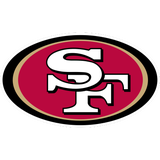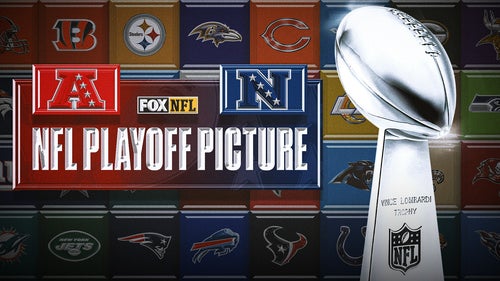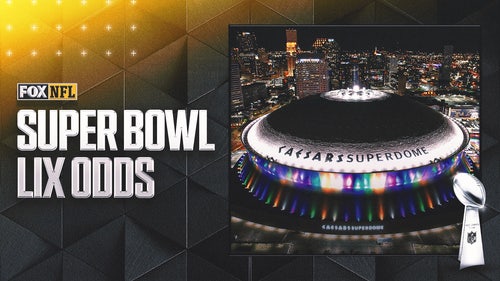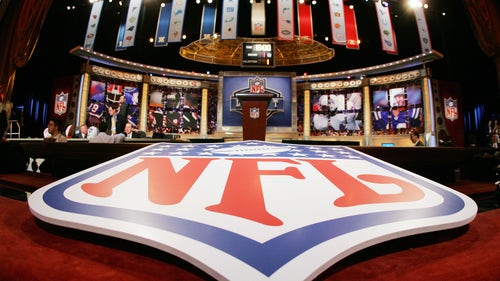
San Francisco 49ers: Disastrous 2015 Offseason Not to Blame for Current Team Woes

One of the primary arguments why the San Francisco 49ers are bad in 2016 is because of all the massive departures the team endured prior to the start of the 2015 NFL season. Looking deeper, these losses can’t be blamed for the current state of the franchise.
NFL: San Francisco 49ers at Arizona Cardinals. Linebacker Patrick Willis. Mandatory Credit: Mark J. Rebilas-USA TODAY Sports
The 2016 San Francisco 49ers are a pretty bad team. OK, they’re really bad. And, chances are, they’ll own another top pick in the upcoming 2017 NFL Draft.
49ers
Niner Noise 19hSan Francisco 49ers: 5 Shake-Ups Head Coach Chip Kelly Needs to Make in Week 6
More headlines around FanSided:
22h - NFL Hot Takes Week 5: Coach of the Year Will Be Tough Call1 d - Starting Kaepernick Not so Simple For San Francisco 49ers1 d - San Francisco 49ers: Chip Kelly's Offense Stinks, but It's Not the Head Coach's Fault1 d - Seahawks Rival Watch: NFC West1 d - San Francisco 49ers: 2017 Should Be the Last for GM Trent BaalkeMore News at Niner Noise
There’s a short answer why things came to be this way. And many fans and analysts point back to the horrid 2015 offseason in which the Niners lost an overwhelming abundance of talent.
Yes, it hurt. And yes, a good chunk of that talent was the reason San Francisco made it to three consecutive NFC Championship games and one Super Bowl appearance.
But we can’t simply place blame on these en masse departures from just over a year ago.
Not when we look at many of the specific players, where they are now and what kind of impact they would have had for the 49ers had they stayed in town.
No, there needs to be another reason. And we’ll get to that too. For now, let’s look back at some of the notable free-agent and retirement departures which dropped the Niners from an NFL elite team all the way down to a laughingstock.
It all stinks. Let’s just figure out why.
December 28, 2014; Santa Clara, CA, USA; San Francisco 49ers head coach Jim Harbaugh watches from the sideline against the Arizona Cardinals during the second quarter at Levi’s Stadium. Mandatory Credit: Kyle Terada-USA TODAY Sports
Former Head Coach Jim Harbaugh and His Coaching Staff
Let’s get this one out of the way first, because it’s essentially unavoidable.
We all know what happened. Rifts emerged between former 49ers head coach Jim Harbaugh and the front office as early as 2014. General manager Trent Baalke won out, and Harbaugh “mutually” parted ways with the franchise early in 2015.
Harbaugh remains one of the most successful head coaches in 49ers history. Go look up the winning percentage. And his coaching staff, primarily defensive coordinator Vic Fangio, led one of the best defenses in the NFL over that span.
Had Harbaugh stayed, and nothing else changed, the Niners probably would have won a few more games in 2015. Exactly how many can never be determined. But the overall effectiveness of the still-depleted roster would have been better than what was seen under former head coach Jim Tomsula.
But only to an extent. Remember, talent trumps coaching in football.
As for Fangio? Well, his Chicago Bears defense currently ranks No. 21 in the league. The Bears lack talent on that side of the ball, which is just about what the 49ers are dealing with right now. The results would have been similar, most likely.
Dec 28, 2014; Santa Clara, CA, USA; San Francisco 49ers cornerback Chris Culliver (29) intercepts the ball on a pass from Arizona Cardinals quarterback Ryan Lindley (14, not pictured) during the third quarter at Levi’s Stadium. The against the San Francisco 49ers defeated the Arizona Cardinals 20-17. Mandatory Credit: Ed Szczepanski-USA TODAY Sports
Losses in the Defensive Backfield
Two names should top the list of players the 49ers lost from their secondary in 2015 — cornerbacks Chris Culliver and Perrish Cox.
Both players recorded career-best years the season prior and both left the 49ers via free agency to kick off 2015. Culliver signed with the Washington Redskins, and Cox landed with the Tennessee Titans.
Yes, the two had a combined nine interceptions for San Francisco in 2014. And we should recall Pro Football Focus listing him as one of the best corners that year from Week 4 onward that year.
Chris Culliver struggled in Weeks 1-3 returning from ACL injury, but from Week 4 on his +10.8 coverage grade ranked fifth among CBs. #49ers
— Jeff Deeney (@PFF_Jeff) March 1, 2015
Since then, Culliver has been dropped from Washington after starting just six games and now finds himself on the Miami Dolphins injured-reserve list.
And Cox? He currently ranks No. 113 out of 117 qualifying cornerbacks this season, per PFF.
No, these guys’ departures didn’t hurt the 49ers.
Dec 29, 2013; Phoenix, AZ, USA; San Francisco 49ers defensive tackle Justin Smith (94) against the Arizona Cardinals at University of Phoenix Stadium. Mandatory Credit: Mark J. Rebilas-USA TODAY Sports
DE Justin Smith’s Retirement and LB Aldon Smith’s Release
On the surface, veteran defensive end Justin Smith’s 2015 retirement hurt a lot. After all, Smith’s pocket-wrecking ability was the primary reason linebacker Aldon Smith emerged as one of the league’s premier pass-rushers in 2012.
NFL: San Francisco 49ers: Aldon Smith. Mandatory Credit: Kyle Terada-USA TODAY Sports
Smith’s release from the team, following a wake of off-field incidents, was the right course of action for San Francisco. But this is viewed as a main cause for the 49ers’ current pass-rushing woes.
At least on the surface.
Yes, Justin Smith was still playing effectively in 2014. But his snap count that year had already dropped down to 649 from 780 and 820 in 2013 and 2012, respectively.
And remember when Smith was injured back in 2012? Remember how Aldon Smith’s sack totals dropped significantly once the elder defensive end was out?
Had Justin Smith stayed, how much longer would the then-35-year-old veteran been able to contribute? A year? Maybe two, at a stretch?
What about Aldon Smith? He had 3.5 sacks over nine games with the Oakland Raiders last season — nowhere close to what fans saw in 2012.
Dec 29, 2013; Phoenix, AZ, USA; San Francisco 49ers wide receiver Michael Crabtree (15) against the Arizona Cardinals at University of Phoenix Stadium. Mandatory Credit: Mark J. Rebilas-USA TODAY Sports
Offensive Playmakers in RB Frank Gore and WR Michael Crabtree
Yes, both running back Frank Gore and wide receiver Michael Crabtree are still both contributing nicely at the NFL level.
Let’s start with Gore. He already crested the 30-year-old plateau back in 2014, but who would have guessed he’d still be a main feature of a pro offense through 2016? Few running backs ever come close, so that’s a testament to his abilities.
Jan 14, 2012; San Francisco, CA, USA; San Francisco 49ers running back Frank Gore (21) warms up before the 2011 NFC divisional playoff game against the New Orleans Saints at Candlestick Park. Mandatory Credit: Cary Edmondson-US PRESSWIRE
The Niners replaced him with running back Carlos Hyde, who should be the team’s focal point moving forward on offense. Nothing wrong with that. It’s part of continuing a team’s success — albeit the 49ers haven’t done so.
As far as Crabtree? Well, his stat lines with the Raiders since joining them as a free agent in 2015 have been more than impressive. So this suggests his departure hurt the Niners, right?
Not exactly. You see, Crabtree was never a great fit in San Francisco’s offense between 2013 and 2014. His Achilles injury in 2013 didn’t help matters either. And Crabtree never really established the chemistry with then-starting quarterback Colin Kaepernick.
Between Kap taking over in the middle of 2012 through 2014, Crabtree had just four 100-plus yard receiving games. And zero in 2014.
Could things have been better in 2015? Probably not. It’s easy to see why Crabtree wanted a change.
October 5, 2014; Santa Clara, CA, USA; San Francisco 49ers guard Mike Iupati (77) lines up during the third quarter against the Kansas City Chiefs at Levi’s Stadium. The 49ers defeated the Chiefs 22-17. Mandatory Credit: Kyle Terada-USA TODAY Sports
Losses Along the Offensive Line
We’re starting to get into the losses that did hurt the 49ers. At least to a larger extent.
San Francisco lost left guard Mike Iupati via free agency, and right tackle Anthony Davis retired (for the first time, not the last).
Iupati was destined to be one of the more sought-after free agents on the market. Prior to 2015, the Niners were pressed pretty closely up against the NFL salary cap. So it makes sense why San Francisco elected to let Iupati walk.
Aug 14, 2016; Santa Clara, CA, USA; San Francisco 49ers offensive tackle Anthony Davis (76) watches the game against the Houston Texans in the third quarter at Levi’s Stadium. The Texans won 24-13. Mandatory Credit: John Hefti-USA TODAY Sports
The hope was for one of the Niners’ up-and-coming guards — Joe Looney, Marcus Martin or Brandon Thomas — to eventually take over. But Looney and Martin are both NFL backups right now, and Thomas is unsigned.
Iupati became a Pro Bowler with the Arizona Cardinals in 2015. So that hurts, but it’s more of a failure to find an adequate replacement (notice a trend here?).
As far as Davis is concerned, his loss certainly set the Niners back. He was 25 years old at the time of his first retirement, and there was no way general manager Trent Baalke could have anticipated such a sudden move. This forced the 49ers into starting former right tackle Erik Pears in Davis’ stead — a move which didn’t work out well. At all.
But Baalke did manage to land seventh-round pick Trent Brown in 2015. Despite Brown’s current growing pains, Davis’ loss can’t quite be viewed as a total detriment.
Remember, Davis tried to return in 2016 only to lose the starting competition. He subsequently retired again.
October 5, 2014; Santa Clara, CA, USA; San Francisco 49ers inside linebacker Patrick Willis (52) during player introductions before the game against the Kansas City Chiefs at Levi’s Stadium. Mandatory Credit: Kyle Terada-USA TODAY Sports
The Departures Which Hurt
It would be naive to suggest none of the en masse 2015 departures hurt the 49ers. A few did, and some more than others.
Two players come to mind — linebackers Patrick Willis and Chris Borland.
Aug 28, 2014; Houston, TX, USA; San Francisco 49ers inside linebacker Chris Borland (50) during the game against the Houston Texans at NRG Stadium. Mandatory Credit: Kevin Jairaj-USA TODAY Sports
Replacing Willis would have been an impossibility, except the Niners already had NaVorro Bowman emerge as the team’s best linebacker. Bowman would handle more of the coverage duties back when this tandem was tops in the NFL, which left the elder Willis in more of a run-stopping role.
Willis’ sudden retirement in 2015 wouldn’t have been too bad had it not been for the simultaneous retirement of Borland, who called it quits after just one stellar year at the NFL level.
Borland’s rationale regarding head injuries makes sense. But we can’t overlook how problematic San Francisco’s linebacker situation became immediately after both players called it a career. In fact, Michael David Smith of NBC Sports’ Pro Football Talk called Borland’s retirement the one which hurt the Niners the most.
Yes, Bowman returned to All-Pro form in 2015 and led the league in tackles (116). But looking at the now-ranked 32nd 49ers run defense, one can only wonder how the stat line would look if Willis and/or Borland were still factors.
But one player or position can’t make or break a team, right?
July 28, 2013; Santa Clara, CA, USA; San Francisco 49ers general manager Trent Baalke (facing) watches during training camp at the Marie P. DeBartolo Centre. Mandatory Credit: Kyle Terada-USA TODAY Sports
The No. 1 Reason Why the 49ers Are Bad in 2016
Nothing exists in a vacuum (aside from dust particles actually in a vacuum), so there isn’t really any one particular reason why the 49ers are a last-place team this season.
In reality, it’s a combination of reasons all meshing together into one convoluted mess of a situation.
We can point out the Niners front office, which helped create a culture in which players had no desire to stay and left either via free agency or retirement. We can look at general manager Trent Baalke — and most of us will — for failing to adequately assemble players capable of taking over for the guys who would eventually depart.
Most arguments will probably end there. Blame Baalke and his failures in various draft classes and free agency.
That’s fair. But there’s a bigger problem.
What’s the vision for this team? What’s the large-scale plan? Is there one?
More from Niner Noise
San Francisco had no set contingency plan for most of the 2015 departures. And if it did, those plans failed miserably. Even the worst business models have some sort of short-, medium- and long-term goals in place.
It’s hard to decide what the 49ers’ goals are, aside from the rhetorical ones we hear about hanging championship banners and all.
So if there is a No. 1 issue, it’s the feeling this franchise has no direction in sight.
All statistics, records and accolades courtesy of Pro-Football-Reference.com andSports-Reference.com unless otherwise indicated.
This article originally appeared on











